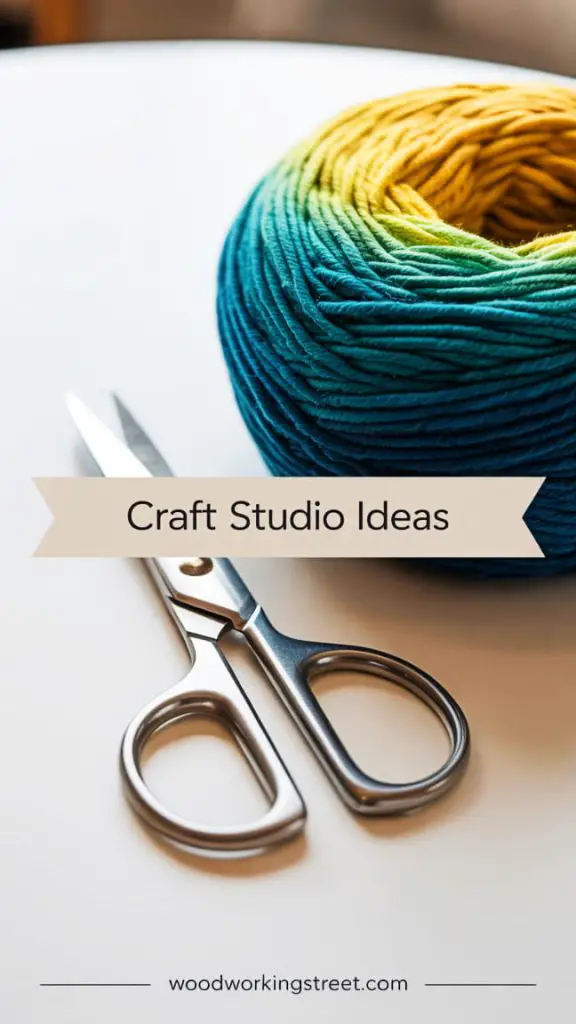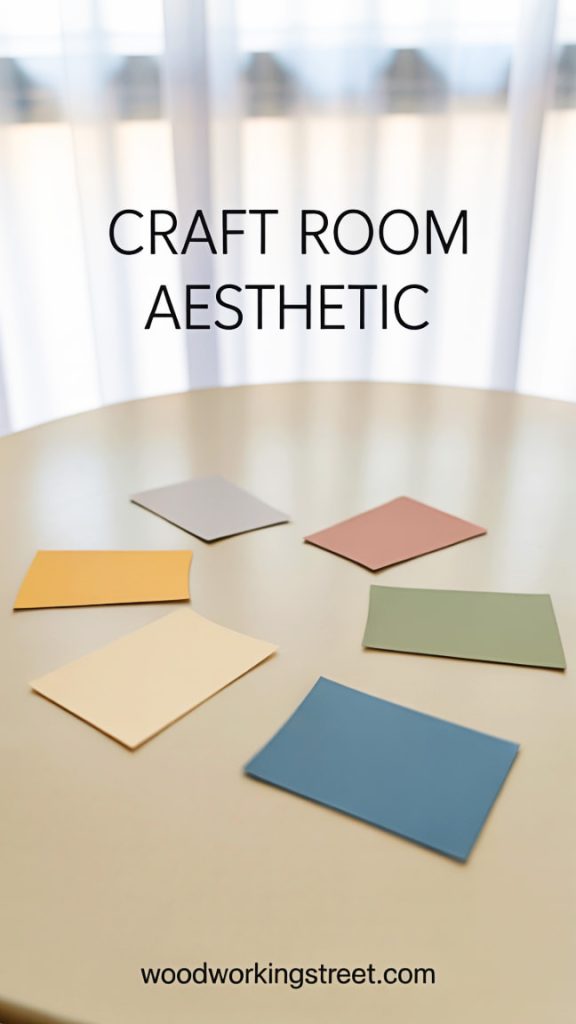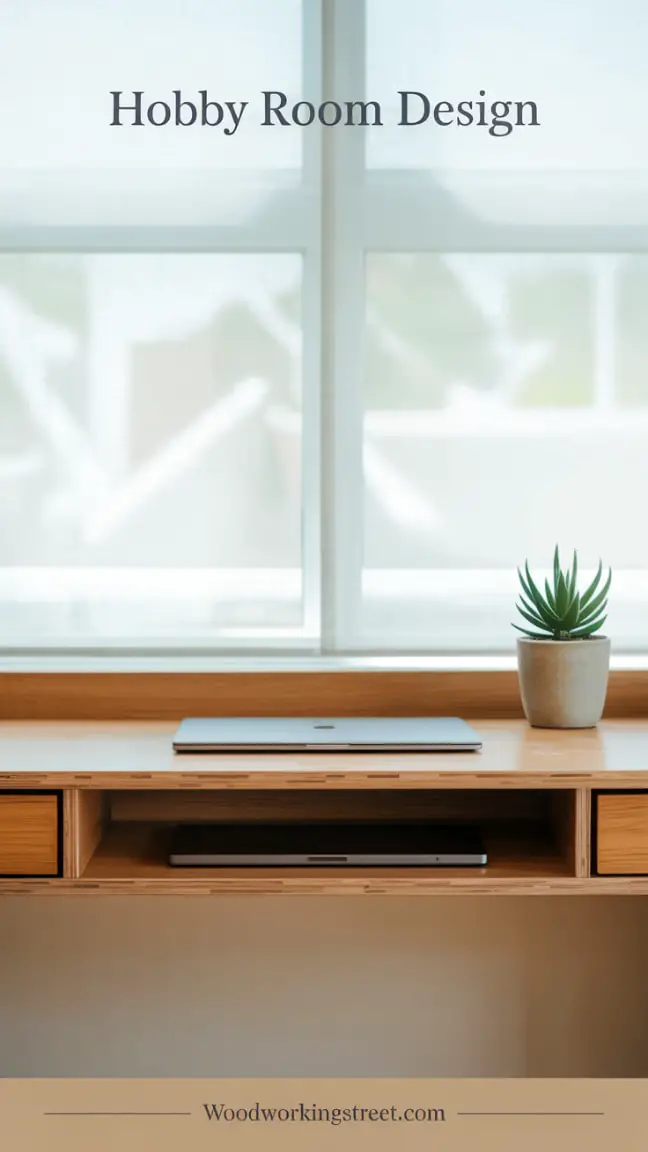Your Perfect Space: Essential Tips for Smart Hobby Room Design
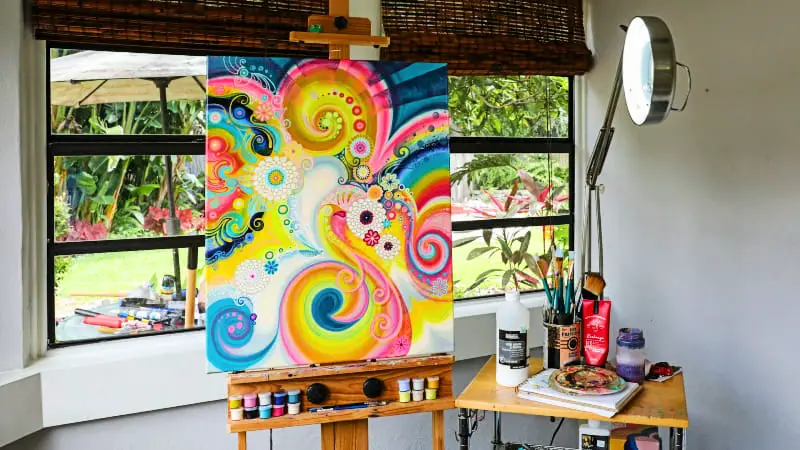
In the quiet corners of our homes, passions often bloom. Perhaps it’s the intricate dance of knitting needles, the vibrant splash of paint on a canvas, the hum of a sewing machine, or the focused concentration on a model kit. Whatever your creative pursuit, there’s a universal truth for every hobbyist: having a dedicated space isn’t just a luxury; it’s a profound necessity. Scattered materials, misplaced tools, and the constant need to pack away your work-in-progress can turn even the most ardent passion into a chore.
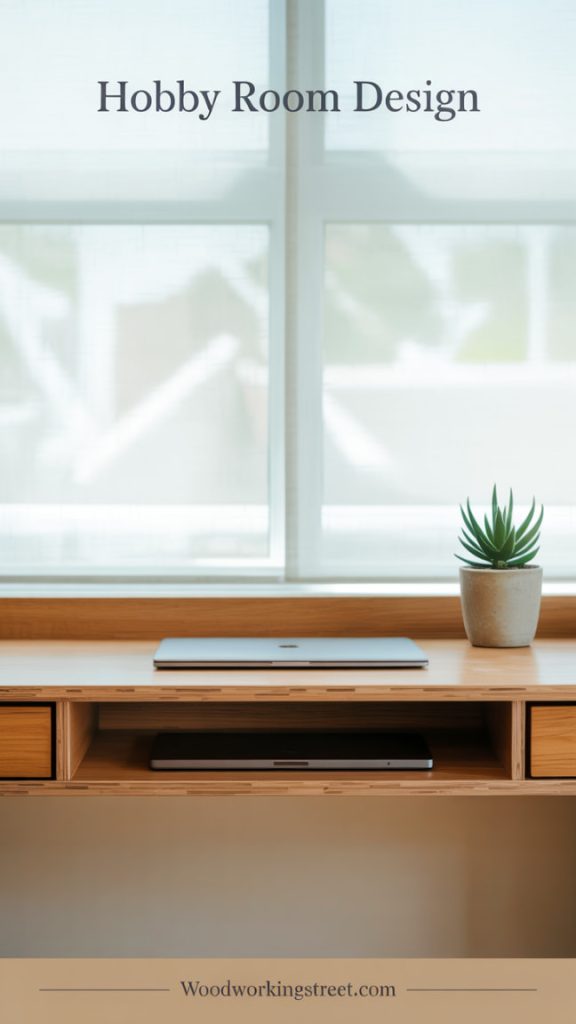
Crafting Your Creative Sanctuary: Hobby Room Design
Imagine stepping into a room where every tool has its place, every color inspires, and every surface invites you to create. This isn’t just about tidiness; it’s about protecting and nurturing a vital part of yourself. A dedicated hobby room design minimizes distractions, maximizes efficiency, and transforms your creative process from a battle against clutter into a joyful exploration. This dedicated space becomes a personal sanctuary, a haven where ideas flourish and projects come to life. Creating a thoughtfully designed area like this is an investment in your passion and peace of mind.
Why Smart Design Matters
So, how do you turn that vision into a tangible reality? The answer lies in smart design. This isn’t about expensive renovations or a sprawling amount of space; it’s about making intentional choices that transform any available area into a functional, aesthetically pleasing, and inspiring creative zone. Smart design optimizes every inch, ensuring your space is efficient, organized, and truly reflective of your unique style.
This guide will walk you through essential tips, from defining your purpose to choosing the right lighting, ensuring your hobby room design not only meets your practical needs but also fuels your creative spirit for years to come. For extensive visual inspiration on various hobby room designs, you might explore galleries on sites like Houzz.
Tip 1: Defining Your Hobby Room’s Purpose & Vibe: Hobby Room Design

Before you even think about paint colors or shelving units, the most crucial step in any hobby room design is a clear vision. What exactly will you be doing in this space, and how do you want it to feel? Answering these questions lays the groundwork for every subsequent design decision, ensuring your room genuinely supports your passions.
Pinpointing Your Passions & Practical Needs
Before diving into mood boards and paint swatches, the most crucial first step is to get crystal clear on what you’ll actually be doing in your hobby room. Begin by listing every single activity you envision taking place there. Are you a meticulous jeweler who needs tiny, organized compartments and bright, focused lighting? A bustling quilter requiring vast cutting surfaces and space for a sewing machine? Or perhaps a woodworker whose craft demands robust ventilation and heavy-duty tool storage?
Each passion comes with its own unique set of requirements: specific tools, the volume and type of materials, necessary work surfaces (whether pristine or prone to mess), and critical considerations like ventilation for fumes or noise control. Take a thorough inventory of your current supplies and any tools you plan to acquire. Assessing these practical needs, and prioritizing your hobbies if space is a constraint, ensures your design truly supports your creative flow and prevents future frustrations.
Cultivating the Atmosphere: From Cozy Hobby Room to Art Studio at Home
When designing, consider how various elements will shape your space. This includes everything from your color palette (warm or cool tones) and lighting temperatures to the textures you incorporate and your decor items. Don’t forget inspirational art or display shelves for your finished projects! To refine this vision, a simple yet powerful technique is to create mood boards. These boards allow you to visually gather ideas and zero in on an aesthetic that truly makes you feel creative and comfortable.
Mastering Dual Functionality: The Office and Craft Room Combined Solution
Many of us don’t have the luxury of a separate hobby room, so it often doubles as a home office. If you’re dreaming of combining your office and craft space, smart design is essential to make sure both activities can live in harmony. The main hurdle? Blending these distinct functions seamlessly so one doesn’t take over the other. You can tackle this by creating clear zones with clever furniture arrangement, adding subtle dividers like screens or bookshelves, or opting for adaptable furniture—think a desk that transforms into a craft table.
Tip 2: Optimizing Layouts & Maximizing Storage: Hobby Room Design

Once you understand your hobbies and the desired atmosphere, it’s time to tackle the physical arrangement of your space. This is where smart design truly shines, turning even the trickiest room into a highly functional and organized creative hub.
Clever Solutions for Limited Space: Unleashing Small Craft Room Ideas
Don’t despair if your creative sanctuary is a compact nook or a corner of another room; brilliant small craft room ideas can maximize even the tiniest footprint. The golden rule in small spaces is to think vertically. Utilize wall-mounted shelving, pegboards, and tall, narrow cabinets to take advantage of every inch from floor to ceiling. Consider multi-functional furniture like a foldable desk that can be tucked away when not in use, or an ottoman with hidden storage for supplies. Clear bins and drawer organizers keep things visible and tidy without adding visual bulk. Ruthless decluttering should always be the first step, ensuring that only necessary and inspiring items remain, allowing your small space to feel open and airy.
Designing for Workflow: Effective Craft Room Layout Ideas
Your hobby room’s design efficiency hinges significantly on its layout, directly influencing how smoothly your creative process flows. An effective setup prioritizes your specific workflow, ensuring frequently used items are within easy reach and tasks can transition seamlessly. Begin by creating distinct zones: perhaps a “messy” zone for cutting or painting, a “clean” zone for assembling or intricate work, and dedicated areas for storage and drying.
Consider the “workflow triangle” concept, strategically placing your most-accessed tools and materials to minimize unnecessary movement. Sketching out different floor plans allows you to visualize furniture placement, ensuring clear pathways and easily accessible work surfaces. Common successful layouts include linear arrangements along one wall, U-shaped configurations for maximum counter space, or L-shaped designs to define two distinct work areas, each offering unique benefits to optimize your creative efficiency.
Smart Storage Strategies: Keeping Supplies Organized & Accessible
Organization is the bedrock of a productive hobby room. Without it, even the most inspiring space can quickly devolve into a frustrating mess. Smart storage strategies involve categorizing your supplies by type, color, or project, and then choosing the right containers. Clear plastic bins are invaluable for seeing contents at a glance, while labeled drawers and opaque boxes keep clutter out of sight. Pegboards with various hooks and shelves offer customizable vertical storage for tools and frequently used items. Don’t forget magazine files for paper, rolling carts for portability, and wall-mounted dispensers for ribbon or fabric.
The goal is to make everything easy to find and easy to put away, fostering a seamless creative flow. For an extensive range of unique organizational solutions and inspiration, explore resources from The Container Store.
Tip 3: Smart Design Choices for Function & Style
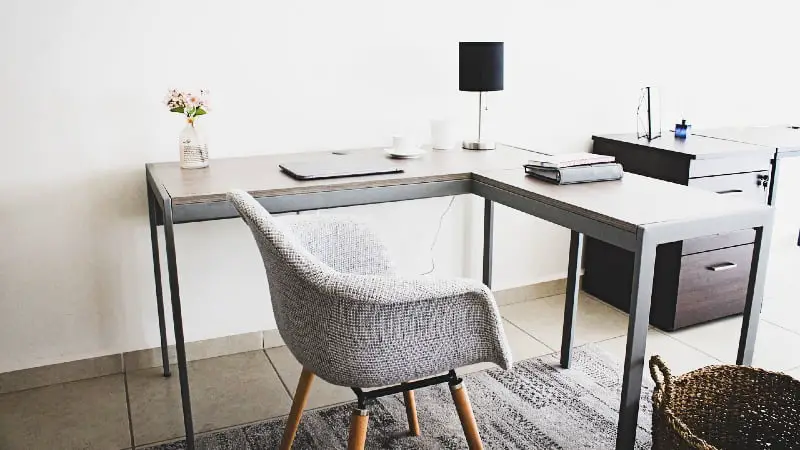
With your purpose defined and your layout optimized, the final stage of hobby room design focuses on the practical details and personal touches that truly make the space your own. These smart choices enhance both the functionality and the aesthetic appeal, ensuring your room is as inspiring as it is efficient.
Budget-Friendly Brilliance: Implementing Craft Room Ideas on a Budget
Creating your dream hobby space doesn’t have to break the bank. There are countless craft room ideas on a budget that prove ingenuity can trump expense. Look for affordable furniture solutions like unfinished wood pieces you can paint, or repurpose existing items—an old dresser can become a supply cabinet, or a vintage trunk can offer both storage and a surface. DIY shelving using crates or plumbing pipes can be stylish and cost-effective. Smart shopping at thrift stores, discount retailers, or even online marketplaces can yield great finds.
Prioritize your most essential tools and materials, allocating your budget where it truly matters, and get creative with upcycling to add character without the high price tag. Many practical and affordable DIY solutions can be found on sites like Family Handyman.
Lighting Your Creativity: Ensuring Optimal Illumination
Good lighting is absolutely critical in any hobby room, impacting everything from preventing eye strain and ensuring color accuracy to boosting your overall mood. While natural light is always ideal—so position your primary workspace near a window whenever possible—it’s essential to supplement it with strategic layers of artificial illumination. This layering typically involves three key types:
- Ambient Lighting: This is the general, foundational light that fills the entire room, allowing you to move around safely and comfortably. Think of your overhead ceiling fixtures, recessed lights, or even large floor lamps that provide an even wash of light. It sets the overall brightness level for the space.
- Task Lighting: This is focused, direct illumination precisely where you need it most for detailed work. Essential for hobbies requiring precision, task lighting includes adjustable desk lamps, under-cabinet LED strips, or even magnifying lamps. It minimizes shadows and ensures clear visibility for intricate tasks like painting, sewing, or intricate crafting.
- Accent Lighting: (Optional) While less critical for pure functionality, accent lighting highlights specific features, displays, or artwork, adding depth and visual interest to your space.
For hobbies demanding true color accuracy (like painting or intricate detailed crafts), choose lights that closely resemble natural daylight. These provide a balanced, neutral white light that helps you see colors without distortion and significantly reduces eye strain during long sessions. If your hobby doesn’t require precise color matching, or if you want to create a relaxing atmosphere, warmer, softer lights can contribute to a cozier vibe. Ultimately, strategic lighting is a significant investment in your eyes, your output, and your overall creative well-being.
Personalizing for Inspiration: Adding the Finishing Touches
Once the practical elements of your hobby room design are firmly in place, it’s time to infuse your space with personality and passion. This crucial final step transforms a merely functional room into an inspiring sanctuary that truly reflects you. Consider displaying your finished projects on open shelving or a dedicated cork board; this not only celebrates your accomplishments but also serves as a powerful source of inspiration for future endeavors. Incorporate artwork, motivational quotes, or cherished photographs that genuinely resonate with your creative spirit and spark joy.
Choosing a color palette that either invigorates or calms you, and integrating comfortable seating for breaks or reflective moments, can significantly enhance the overall feel. Even small touches like a cozy rug underfoot, a few vibrant plants, or a diffuser with an uplifting essential oil can profoundly enhance the atmosphere, making your hobby room a place you genuinely look forward to spending time in.
Conclusion: Enjoying Your Thoughtfully Designed Space
The journey of creating your perfect hobby room is a rewarding one, transforming a simple space into a wellspring of creativity and productivity. By following these essential tips for hobby room design, you’ve laid the groundwork for an environment that not only meets your practical needs but also consistently inspires your artistic endeavors.
The Rewards of Smart Design
You’ve moved beyond scattered supplies and cluttered countertops to a realm of organized efficiency. Your tools are at your fingertips, your materials are neatly stored, and your workflow is streamlined. This thoughtful design leads to less frustration and more pure enjoyment of your hobbies. It’s a space where ideas can germinate without interruption, where projects can unfold smoothly, and where your passion truly has room to breathe and grow. The investment of time in planning pays dividends in sustained creativity and peace of mind.
Your Evolving Creative Haven: Hobby Room Design
Remember, your hobby room is a living, evolving space, much like your passions themselves. As your hobbies change or expand, your room can adapt with them, thanks to the smart design principles you’ve applied.
Did you enjoy reading this article? If so, you might be interested in visiting my Pinterest profile. It contains pins related to home organization, creative projects, woodworking, and clever décor solutions. You’ll find a wealth of visual inspiration to spark your next DIY adventure!
